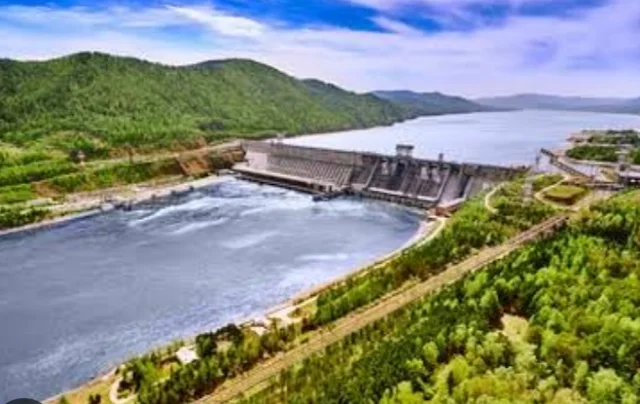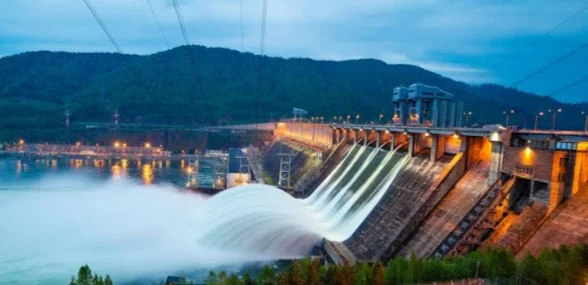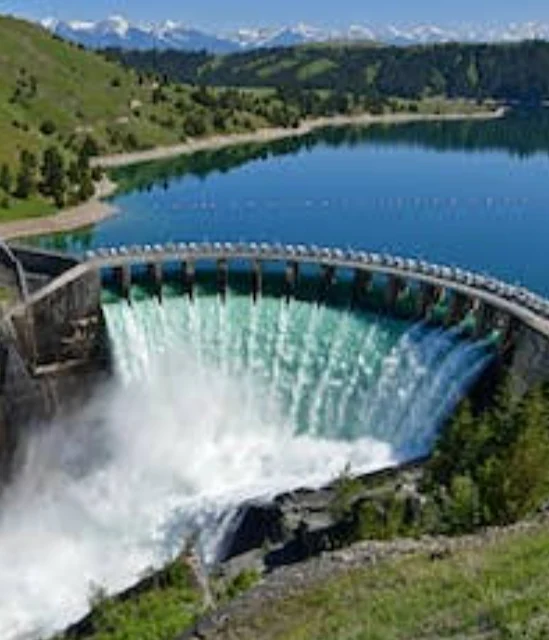Global Outlook of Hydro Energy
Hydropower is a mature renewable energy source that has played a significant role in global electricity generation for decades.
It currently accounts for over 15% of the world's electricity, making it the third-largest source after coal and natural gas. However, the future of hydropower is complex and faces several challenges and opportunities.
Global Outlook of Hydro Energy: A Growing Source of Renewable Power
Hydropower, a renewable energy source harnessing the energy of flowing water, has played a significant role in meeting global energy needs for centuries. As the world transitions towards cleaner and more sustainable energy sources, hydropower continues to be a crucial component of the global energy mix.
Key Trends and Outlook:
- Growing Capacity: Hydropower capacity has been steadily increasing worldwide, driven by the need for clean energy and technological advancements in dam construction and turbine design.
- Regional Variations: The distribution of hydropower capacity is uneven across different regions. Countries with abundant water resources, such as China, Brazil, and Canada, have the highest installed capacity. However, many other regions, including Africa, Southeast Asia, and South America, also have significant hydropower potential.
- Challenges and Opportunities: The development of hydropower projects faces challenges such as environmental impacts, social displacement, and economic risks. However, technological advancements, improved environmental management practices, and international cooperation are addressing these challenges and unlocking new opportunities for hydropower development.
- Emerging Trends: Recent trends include the development of smaller-scale hydropower plants, off-grid hydro solutions, and the integration of hydropower with other renewable energy sources like solar and wind.
Table: Global Hydropower Capacity (Estimated)
| Region | Capacity (MW) | Percentage of Global Total |
|---|---|---|
| Asia | 2,000,000 | 45% |
| Americas | 1,000,000 | 23% |
| Europe | 500,000 | 11% |
| Africa | 200,000 | 5% |
| Oceania | 100,000 | 2% |
| Total | 4,400,000 | 100% |
Note: The data in this table may vary slightly due to ongoing developments and updates in the global energy landscape. For the most accurate and up-to-date information, please consult recent reports from international energy agencies such as the International Energy Agency (IEA) or the International Hydropower Association (IHA).
Growth and Development:
- Global hydropower capacity is expected to increase by 17% between 2021 and 2030, adding 230 GW. This growth is driven by factors such as increasing demand for clean energy, advancements in technology, and government support for renewable energy development.
- However, net capacity additions are forecast to decrease by 23% compared to the previous decade. This slowdown is due to several factors, including environmental concerns, social impacts, and increasing competition from other renewable energy sources like solar and wind.
- The growth is concentrated in a few regions, with Asia accounting for the majority of new capacity additions. This is due to the presence of large rivers and favorable regulatory environments in many Asian countries.
Challenges and Opportunities:
- Environmental concerns: Hydropower projects can have significant environmental impacts, such as dam construction disrupting ecosystems and displacing communities. There are growing concerns about the impact of climate change on hydropower generation, as droughts and floods can affect water availability.
- Social impacts: Hydropower projects can also have negative social impacts, such as displacement of communities and loss of livelihoods. There is a growing demand for more sustainable and socially responsible hydropower development.
- Competition from other renewables: Solar and wind power are becoming increasingly cost-competitive with hydropower, which could limit its future growth. However, hydropower offers unique advantages such as dispatchability and storage, which could make it valuable in a renewable-powered electricity system.
Future Outlook:
- The future of hydropower is uncertain and will depend on how these challenges and opportunities are addressed.
- If hydropower can be developed in a more sustainable and socially responsible way, it can continue to play a significant role in the global energy mix.
- However, if the challenges are not addressed, hydropower could be marginalized by other renewable energy sources.
Key trends to watch:
- The development of new technologies, such as pumped storage hydropower, which can store energy and help balance variable renewable energy sources like solar and wind.
- The increasing focus on sustainability and social responsibility in hydropower development.
- The growing competition from other renewable energy sources.
The global outlook of hydro energy is complex and uncertain, but it has the potential to continue playing a significant role in the transition to a clean energy future.
Global Outlook Hydro Energy : Statistics Data
Hydro Energy Statistics:
Here are some key statistics about hydro energy as of 2023/2024:
Generation and Consumption:
- Global hydropower generation: ~4,500 TWh (terawatt hours) per year
- Global hydropower consumption: ~40.26 EJ (exajoules) per year
- Share of global electricity generation: ~17%
- Largest hydropower producers by installed capacity: China, Brazil, USA, Canada, India
Capacity and Cost:
- Global installed hydropower capacity: ~1,330 GW (gigawatts)
- Average hydropower installation cost: $2,881 USD/kW
- Average levelized cost of electricity (LCOE) from hydropower: $0.06 USD/kWh (one of the lowest among all energy sources)
Environmental and Social Impacts:
- Hydropower accounts for roughly 2.1% of global greenhouse gas emissions.
- Dam construction can displace communities and disrupt ecosystems.
- There are ongoing efforts to develop and implement more sustainable and socially responsible hydropower projects.
Future Outlook:
- Global hydropower capacity is expected to grow by 17% by 2030, but net additions may decrease.
- Growth is concentrated in Asia, with significant challenges like environmental concerns and social impacts to address.
- Advancements in technology and growing demand for clean energy offer opportunities for sustainable hydropower development.
- Competition from other renewable sources like solar and wind will influence future growth.
Hydro Energy Statistics Table
| Statistic | Value | Year | Source |
|---|---|---|---|
| Global Hydropower Generation | 4,500 TWh | 2023 | IHA, EIA |
| Global Hydropower Consumption | 40.26 EJ | 2021 | Statista |
| Share of Global Electricity Generation | 17% | 2023 | IEA |
| Largest Hydropower Producers (Installed Capacity) | China, Brazil, USA, Canada, India | 2023 | IHA |
| Global Installed Hydropower Capacity | 1,330 GW | 2020 | IHA |
| Average Hydropower Installation Cost | $2,881 USD/kW | 2022 | Statista |
| Average Hydropower LCOE | $0.06 USD/kWh | 2022 | Statista |
| Hydropower Greenhouse Gas Emissions | 2.1% | 2020 | IEA |
Additional Notes:
- TWh = Terawatt hours
- EJ = Exajoules
- GW = Gigawatts
- USD/kW = US Dollars per kilowatt
- LCOE = Levelized Cost of Electricity
- Data may vary slightly depending on the source.
- This table only includes a selection of key statistics. More detailed data is available from the sources listed above.
Global Outlook of Hydro Energy: New Technology
New Technologies Shaping the Global Outlook of Hydro Energy:
The future of hydropower hinges on its ability to adapt and evolve alongside other renewable energy sources. Thankfully, several exciting new technologies are emerging, offering solutions to existing challenges and unlocking new opportunities:
1. Pumped Storage Hydropower (PSH):
- This technology acts like a giant battery, storing excess renewable energy (like solar or wind) by pumping water uphill and releasing it through turbines to generate electricity when needed.
- PSH offers crucial flexibility and grid stability in an increasingly renewable-powered world.
- Advancements in closed-loop PSH systems minimize environmental impact by using existing reservoirs instead of building new ones.
2. Marine and Hydrokinetic Energy:
- This technology harnesses energy from tidal movements, waves, and ocean currents.
- While still in its early stages, it holds potential for distributed energy generation in coastal regions and islands.
- Advancements in underwater turbines and micro-hydro systems are improving efficiency and reducing costs.
3. Run-of-the-River and Small Hydropower:
- These systems utilize smaller rivers and waterways without requiring large dams, mitigating some environmental concerns.
- Advancements in modular designs and microturbines enable their use in diverse geographical settings.
- They offer potential for local communities to generate their own clean energy and contribute to a decentralized grid.
4. Digitalization and Smart Grid Integration:
- Advanced sensors, data analytics, and machine learning are optimizing hydropower operations for increased efficiency, reliability, and resilience.
- Real-time monitoring and predictive maintenance reduce downtime and environmental impact.
- Smart grid integration allows hydropower to seamlessly complement and support other renewable energy sources.
5. Sustainable and Socially Responsible Development:
- Recognizing the crucial role of sustainability and social responsibility, new approaches prioritize:
- Minimizing environmental footprint through responsible site selection, fish passage solutions, and ecosystem restoration.
- Engaging and empowering local communities through transparent consultations, benefit-sharing programs, and livelihood development initiatives.
These innovations open doors for a more promising future for hydropower, where it can continue to contribute to a clean, stable, and equitable energy future.
However, challenges remain:
- Scaling up these technologies while ensuring their economic viability.
- Balancing energy needs with environmental and social considerations.
- Fostering robust regulatory frameworks and supportive policies.
By addressing these challenges and harnessing the potential of new technologies, hydro energy can remain a significant player in the global energy landscape for decades to come.
Global Outlook of Hydro Energy: Financial and Infrastructure
Global Outlook of Hydro Energy: Financial and Infrastructure
The financial and infrastructure outlook for hydro energy paints a complex picture with opportunities and challenges intertwined:
Opportunities:
- Growing demand for clean energy: As the world strives for net-zero emissions, the demand for clean energy sources like hydro is expected to continue growing, potentially attracting investments.
- Low levelized cost of electricity: Hydropower boasts one of the lowest LCOE amongst renewables, making it attractive for long-term energy security and affordability.
- Existing infrastructure: The vast existing hydropower infrastructure provides a potential foundation for modernization and expansion in some regions.
- New financial models: Innovative financing mechanisms like green bonds and public-privaHigh upfront costs:te partnerships could unlock resources for new projects.
Challenges:
- Building new hydropower projects, especially large dams, requires significant upfront investments, deterring some investors.
- Financing for modernization: Upgrading and retrofitting existing infrastructure might not attract investors seeking high returns, requiring creative financing solutions.
- Regulatory hurdles: Obtaining permits and navigating complex regulatory frameworks can delay and increase project costs.
- Competition from other renewables: Solar and wind energy are attracting significant investments due to their rapid cost reductions, posing competition for hydro funding.
- Social and environmental concerns: Potential negative social and environmental impacts can raise public opposition and increase project complexity, influencing financial viability.
Infrastructure considerations:
- Aging infrastructure: Many existing hydropower facilities are aging, requiring significant investments in maintenance and modernization to ensure safety and efficiency.
- Need for modernization: Integrating advanced technologies like pumped storage and digitalization requires infrastructure upgrades.
- Geographical limitations: Suitable locations for new large-scale hydropower projects are becoming increasingly scarce.
- Distributed generation: Smaller, run-of-the-river projects and marine energy could offer new infrastructure needs and opportunities.
Overall, the financial and infrastructure outlook for hydro energy demands:
- Strategic investments: Targeting modernization, upgrades, and smaller-scale, sustainable projects alongside selective expansion, focusing on environmental and social responsibility.
- Innovative financing models: Exploring public-private partnerships, green bonds, and other tailored financial instruments.
- Addressing social and environmental concerns: Implementing sustainable and socially responsible practices to gain public acceptance and attract capital.
- Collaboration and policy support: Fostering collaborative efforts between governments, investors, and communities to address challenges and create a conducive environment for sustainable hydropower development.
By navigating these financial and infrastructure considerations with a forward-thinking approach, hydro energy can contribute to a clean energy future while securing its own financial and infrastructural sustainability.
Global Outlook of Hydro Energy: International Collaborations
Global Outlook of Hydro Energy: International Collaborations
International collaboration plays a crucial role in shaping the future of hydro energy by:
Addressing shared challenges:
- Environmental and social impacts: Collaborations can facilitate knowledge sharing, develop best practices, and implement mitigation strategies to minimize negative impacts across borders.
- Technology development and innovation: Joint research and development efforts can accelerate the advancement of new technologies like PSH and marine energy, benefiting all participating countries.
- Financing and knowledge transfer: Developed nations can support developing countries through financial aid, technology transfer, and capacity building, promoting equitable access to clean energy.
Examples of ongoing collaborations:
- International Hydropower Association (IHA): A global industry association promoting sustainable hydropower development through knowledge sharing, advocacy, and standards development.
- World Hydropower Congress: A triennial forum for stakeholder dialogue and knowledge exchange on hydropower issues.
- Clean Energy Ministerial (CEM): A global forum fostering international collaboration on clean energy technologies, including hydropower.
- World Bank and regional development banks: Providing financial and technical assistance for sustainable hydropower projects in developing countries.
- Bilateral and multilateral partnerships: Agreements between specific countries or groups of countries to advance hydropower development and address shared challenges.
Opportunities for future collaboration:
- Standardization and harmonization: Establishing common standards for environmental and social safeguards, data sharing, and technology transfer.
- Joint research and development programs: Focusing on areas like advanced technologies, grid integration, and sustainable development practices.
- Capacity building and knowledge sharing: Sharing expertise and best practices between developed and developing countries.
- Financial mechanisms: Creating innovative financing instruments to attract investments for sustainable hydropower projects in developing countries.
- Regional cooperation: Collaborating within specific regions to address shared challenges and opportunities related to hydropower development, water resources management, and energy security.
Challenges to international collaboration:
- Differing national interests and priorities: Balancing the needs and goals of individual countries can be complex.
- Varying levels of commitment and resources: Ensuring all participants contribute meaningfully requires effective coordination and resource allocation.
- Geopolitical tensions and security concerns: Political instability in certain regions can hinder collaboration efforts.
Iinternational collaboration is essential for harnessing the full potential of hydro energy in a sustainable and equitable manner. By overcoming challenges and strengthening existing partnerships, the global community can ensure that hydro energy plays a positive role in the transition to a clean energy future.
Global Outlook of Hydro Energy: Future Development
The future of hydro energy hinges on its ability to navigate a complex landscape of opportunities and challenges. Here's a glimpse into what might unfold:
Sustainable and Responsible Development:
- Prioritizing environmental and social considerations: Projects will incorporate advanced mitigation strategies, minimize ecosystem impacts, and engage local communities in planning and benefit-sharing.
- Smaller-scale and run-of-river projects:Embracing technological advancements: Integration of PSH, digitalization, and advanced turbines will enhance efficiency, flexibility, and grid integration.
- Focus on distributed generation, minimizing environmental impact and fostering local energy ownership.
Financial and Infrastructure Transformation:
- Modernization and upgrades: Existing infrastructure will be revitalized with smart technologies, maximizing output and lifespan.
- Innovative financing models: Green bonds, public-private partnerships, and blended finance will unlock investments for sustainable projects.
- Strategic capacity expansion: Selective expansion in suitable locations, prioritizing renewable-hydro hybrids and pumped storage for grid stability.
Regional and International Collaboration:
- Knowledge sharing and capacity building: Developed nations will support developing countries through technology transfer and expertise sharing.
- Standardized best practices: Harmonized environmental and social safeguards, data sharing protocols, and technology standards will streamline development.
- Joint research and development: Collaborative efforts will accelerate advancements in new technologies and sustainable practices.
Key Trends to Watch:
- Growing demand for clean energy: As the world strives for net-zero emissions, the demand for hydro could rise, but competition from other renewables requires adaptation.
- Stringent environmental and social regulations: Projects will need to demonstrate sustainability and social responsibility to gain public and regulatory approval.
- Advancements in technology: New technologies like PSH and digitalization will enhance hydro's flexibility, grid integration, and cost-competitiveness.
- Evolving financial landscape: Innovative financing models will be crucial for attracting investments in sustainable hydro projects.
- Shifting geopolitical landscape: Regional cooperation and international collaboration will be key to addressing shared challenges and opportunities.
Possible Scenarios:
- Sustainable Development Success: Hydro thrives as a key player in the clean energy transition, embracing sustainability, innovation, and collaboration.
- Stagnant Growth: Lack of investment, technological stagnation, and social resistance limit hydro's role in the future energy mix.
- Renewed Importance: Technological breakthroughs, strategic expansion, and effective collaboration lead to a resurgence of hydro in the energy landscape.
Uncertainties Remain:
- The pace and scale of global energy transition and climate action.
- Effectiveness of policies and regulations supporting sustainable hydro development.
- Technological advancements and their cost-competitiveness.
- Socioeconomic and political developments in key hydro-producing regions.
Conclusion:
The future of hydro energy is intricately linked to its ability to adapt, innovate, and collaborate. By embracing sustainability, leveraging technology, and fostering international cooperation, hydro can continue to play a significant role in a secure and sustainable energy future. However, navigating the challenges and uncertainties effectively will be crucial for securing its place in the evolving global energy landscape.









